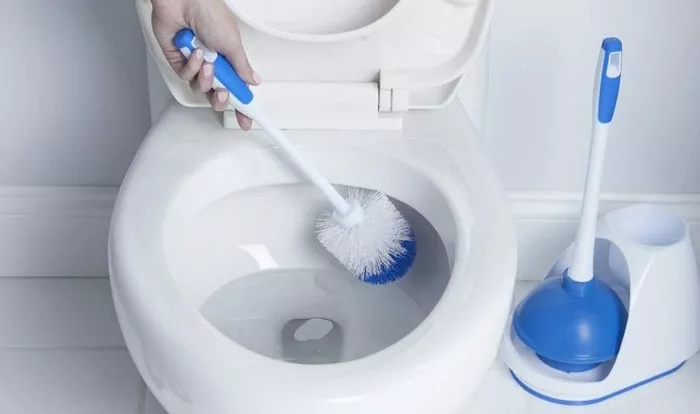Maintaining a clean toilet is not just about aesthetics; it’s crucial for promoting overall hygiene and health within your household. A dirty toilet can harbor a plethora of germs, bacteria, and unpleasant odors, posing potential health risks to you and your family members. Bacteria like E. coli and Salmonella can thrive in unclean environments, increasing the risk of gastrointestinal infections and other illnesses. Moreover, the foul odor emanating from a neglected toilet can permeate the entire bathroom, making it an unpleasant space to use and undermining the comfort of your home.
Frequency:
The frequency of cleaning your toilet depends on various factors, including the number of occupants in your household, how frequently the toilet is used, and personal preferences. However, as a general rule of thumb, it’s advisable to clean your toilet at least once a week to prevent the buildup of grime, bacteria, and mineral deposits. This regular cleaning schedule helps maintain a hygienic environment and ensures that your toilet remains clean and fresh for use.
Daily Maintenance:
In addition to weekly cleanings, daily maintenance tasks are essential for keeping your toilet relatively clean between deep cleanings. Simple tasks such as wiping down the toilet seat and handle with disinfectant wipes can help eliminate surface germs and prevent the spread of bacteria. Additionally, promptly addressing any spills or stains can prevent them from becoming stubborn and difficult to remove during the next deep cleaning session.
Deep Cleaning:
Deep cleaning your toilet involves thorough scrubbing of all its surfaces, including the bowl, seat, lid, and exterior. To effectively clean each part of the toilet, follow these step-by-step instructions:
1. Bowl: Start by applying a toilet bowl cleaner or a mixture of baking soda and vinegar to the inside of the bowl. Use a toilet brush to scrub the entire surface, paying extra attention to areas under the rim and around the waterline.
2. Seat and Lid: Wipe down the seat and lid with a disinfectant cleaner or disinfectant wipes. Make sure to clean both the top and bottom surfaces thoroughly to remove any germs or residue.
3. Exterior: Clean the exterior of the toilet, including the tank and base, using a multipurpose cleaner or a solution of water and mild detergent. Don’t forget to clean behind the toilet and around the floor area as well.
Special Considerations:
Households with pets or young children may need to clean their toilets more frequently due to increased messes and hygiene concerns. Pet hair, urine, and feces can accumulate around the toilet area, leading to odors and hygiene issues if not cleaned promptly. Similarly, young children may be less careful about hygiene practices, necessitating more frequent cleanings to maintain a sanitary environment.
Signs of Neglect:
It’s essential to be vigilant for signs that indicate your toilet requires cleaning. Visible stains, unpleasant odors, or the presence of mold or mildew are all indicators that your toilet needs attention. Ignoring these signs can lead to the proliferation of harmful bacteria and compromise the hygiene of your bathroom. Therefore, it’s crucial to address any signs of neglect promptly and clean your toilet thoroughly to maintain a hygienic environment.
Preventive Measures:
To reduce the frequency of toilet cleanings and keep your toilet cleaner for longer periods, consider implementing preventive measures such as:
1. Toilet Bowl Cleaners: Use toilet bowl cleaners with disinfectant properties to help prevent the buildup of bacteria and mineral deposits.
2. Toilet Bowl Tablets: Consider using toilet bowl tablets that dissolve in the water with each flush, helping to keep the bowl clean and fresh between cleanings.
3. Toilet Seat Covers: Install toilet seat covers to protect the seat from stains and spills, reducing the need for frequent cleanings.
Personal Health Considerations:
Maintaining a clean toilet is not only essential for household hygiene but also for personal health and well-being. Practicing good hygiene habits, such as washing hands thoroughly after using the toilet, can help prevent the spread of germs and bacteria. Encourage family members to adopt these habits to protect themselves and others from illness and promote a healthier living environment.
Environmental Impact:
When it comes to cleaning your toilet, consider eco-friendly options and practices that are gentle on the environment. Natural cleaning agents like vinegar and baking soda are effective alternatives to harsh chemicals and are safe to use around pets and children. Additionally, opt for reusable cleaning tools such as microfiber cloths and scrub brushes to reduce waste and minimize your environmental footprint.
Conclusion:
In conclusion, regular toilet cleaning is essential for maintaining a clean and hygienic household environment. By emphasizing the importance of hygiene, addressing the frequency of cleanings, providing tips for daily maintenance and deep cleaning, and discussing special considerations and preventive measures, you can ensure that your toilet remains a sanitary and comfortable space for you and your family. Incorporate these practices into your household cleaning routine to promote the health and well-being of your loved ones and create a welcoming bathroom environment for all.

